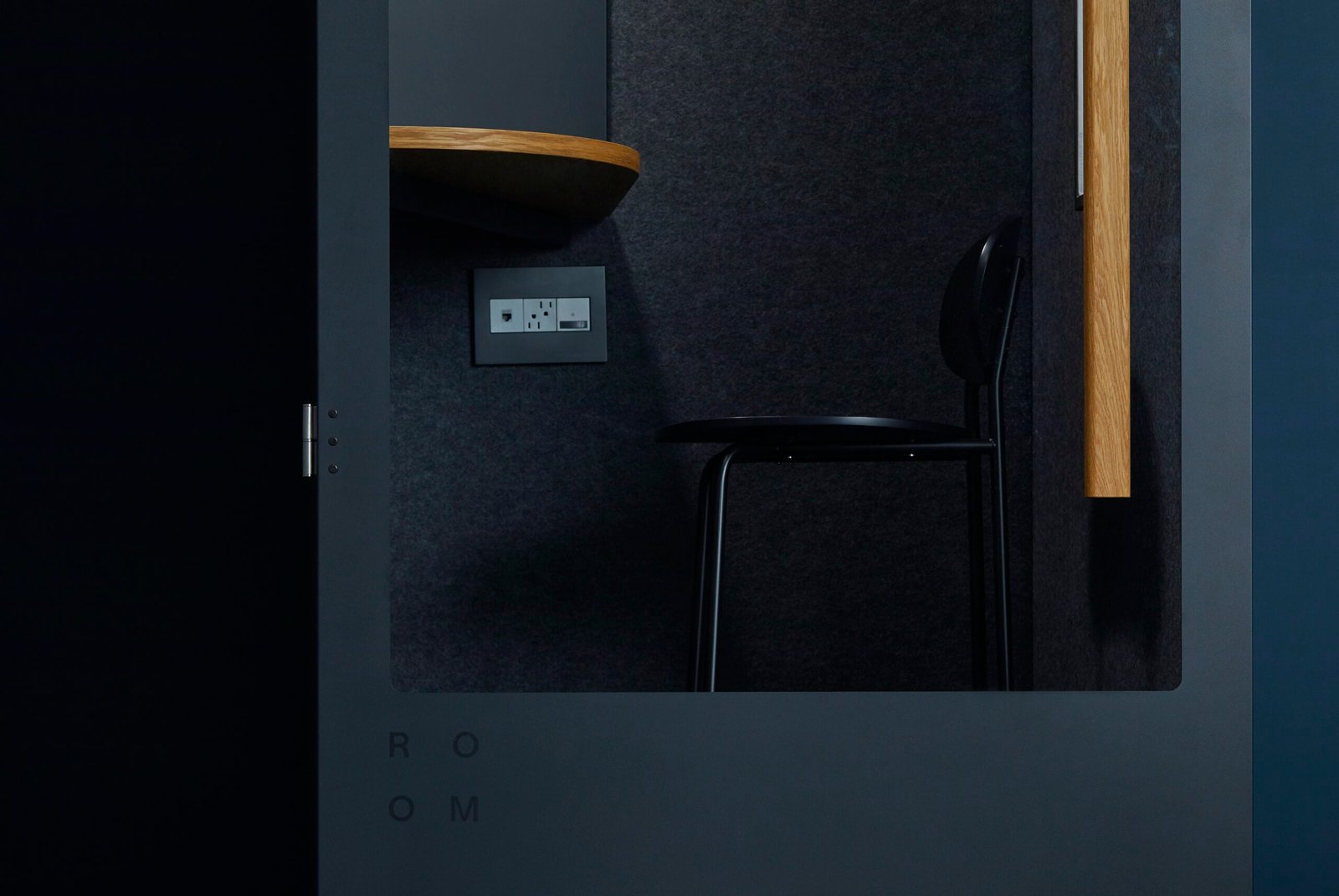Whether you’re looking to create a little peace and quiet in a bustling home or hoping to muffle the sounds of upstairs stomping, your quest for tranquility could be accomplished by soundproofing between existing floors.
The article to follow brims with savvy solutions on “How To Soundproof Between Existing Floors Without Removing Ceiling”. You might be surprised to learn how easy this task can be, all while keeping your existing ceiling in place.
As you read on, you’ll discover a variety of tips, tricks and best practices, custom-tailored to help you quiet down both newly constructed and old, well-lived-in spaces alike.
Understanding the Basics of Soundproofing
Soundproofing might seem like a complex subject, but in essence, it’s all about controlling vibrations.
When a noise is made, it sets off a chain of vibrations that travel through the air or through physical structures until they reach your ear. Soundproofing works by interrupting those vibrations to prevent the noise from reaching your ear.
Explanation of soundproofing principles
One of the basic principles in soundproofing is mass. The more mass between you and the source of noise, the harder it is for the sound waves to vibrate through it.
Another key principle is isolation. Any gaps where sound can squeeze through need to be blocked. Finally, sound can be absorbed by soft materials that soak up vibrations instead of transmitting them.
Importance and benefits of soundproofing
Soundproofing can offer a multitude of benefits. It can improve your home comfort by reducing unwanted noise from outside or between rooms, protect your privacy by keeping conversations from being overheard, and even potentially increase your property’s value by adding a desirable feature. Plus, the peace and quiet you gain can greatly boost your quality of life.
Types of noise to be addressed (airborne and impact)
There are two main types of noise to be addressed in soundproofing: airborne and impact. Airborne noise comes from sources like music, voices, and traffic, and travels through the air. Impact noise, on the other hand, is the result of physical contact with a structure, like footsteps on a floor or a door being slammed. Both types of noise can be mitigated with proper soundproofing techniques.
Assessing the Noise Problem
Before you can begin soundproofing, you need to understand your noise problem. This involves determining where the noise is coming from, how severe it is, and what parts of your home are contributing to the issue.
Determining noise sources and paths
The first step is to identify the sources of the noise. Are they external, like busy roads, or internal, like a noisy neighbor upstairs? Next, figure out how the noise is getting to you. Is it coming through the walls, floor, or ceiling? Knowing the path of the noise will help you devise a more effective soundproofing strategy.
Measuring the severity of the noise
Measuring the severity of the noise can give you a clearer picture of the extent of your noise problem. This can be done with a sound meter, or by simply quieting down and really listening to the noise. Consider how often the noise occurs and how much it disturbs you.
Identifying structural weaknesses contributing to noise issues
Finally, you’ll need to identify any structural weaknesses in your home that are contributing to the noise. This could be thin walls, gaps in doors or windows, or even just poorly insulated floors or ceilings. These areas can often be improved to reduce noise.

Materials Used for Soundproofing
Choosing the right soundproofing materials is crucial for an effective soundproofing project. Here are some commonly used materials and their benefits.
Usage and benefits of Mass Loaded Vinyl (MLV)
Mass Loaded Vinyl (MLV) is a thin but heavy sheeting material that is highly effective at blocking sound. It’s flexible and easy to work with, making it a great choice for walls, ceilings, and floors. As a dense material, MLV is especially effective at blocking airborne noise.
Understanding the effectiveness of Resilient Channels
Resilient channels are a type of metal framework used to create a barrier between the noise source and the room. They work by preventing the direct transfer of noise vibrations from one side of a wall or ceiling to the other. By reducing this direct contact, they can greatly reduce the amount of noise that comes through.
Evaluating benefit of acoustic caulk and foam
Acoustic caulk and foam are both used to seal gaps and cracks where sound can sneak through. They can fill in around doors and windows, in holes for electrical outlets, or any other small gaps. Both materials are easy to apply and can be a cost-effective part of your soundproofing solution.
Importance of insulation in soundproofing
Insulation is another key component of soundproofing. Insulating materials can absorb sound vibrations and prevent them from transmitting through your walls, floors, or ceiling.
There are several types of insulation that can be used for soundproofing, including mineral wool, fibreglass, and cellulose.
Soundproofing Methods Without Removing the Ceiling
When it comes to soundproofing between floors without removing the ceiling, there are several methods you can use. Here are some options to consider.
Adding additional layers to the existing floor
One method is to add additional layers to the existing floor. This could involve laying down a roll of MLV, or installing a layer of drywall or plywood. The added mass can help block noise transmission between the floors.
Using damping compounds
Damping compounds are materials that can absorb and dissipated the sound waves, reducing the resonance and therefore the noise transmission. They are typically applied between layers of construction material, such as between layers of drywall or plywood.
Installation of floating floor system
A floating floor system is another effective method of soundproofing. This involves installing a layer of resilient material, such as cork or rubber, beneath the flooring. This resilient layer helps to isolate the floor from vibration, effectively reducing noise transmission.
Insulating the space between ceiling and floor with batts or blow-ins
You can also insulate the space between your ceiling and the floor above with batts or blow-in insulation. This can add mass, absorb sound vibrations, and seal any gaps where noise could sneak through.
Installation of Soundproofing Materials
Installation of soundproofing materials is an important process that should be carried out correctly for optimal results. Whether it is Mass Loaded Vinyl, resilient channels, acoustic caulk, or insulation materials, each has a unique installation process that is crucial to understanding.
Correct way of installing Mass Loaded Vinyl
When it comes to installing MLV, the process is relatively straightforward. First, measure and cut the MLV to fit your space. Then, hang it on your walls or ceiling with nails or screws, making sure no spaces are left between sheets. You can also layer multiple sheets for increased sound blocking.
How to install resilient channels
Resilient channels should be installed perpendicular to the framing of your walls or ceiling. They are secured with screws and should be evenly spaced across the surface. Once installed, drywall is then attached to the resilient channels rather than the framing, creating a decoupled, sound-blocking layer.
Usage and application of acoustic caulk or foam
When using acoustic caulk or foam, start by identifying any gaps or cracks where sound might be sneaking through. Apply the caulk or foam to these areas, smoothing out any excess and allowing it to dry thoroughly. Remember, both of these materials are for sealing gaps, not for soundproofing large areas.
Appropriate techniques for installing insulation materials
When installing insulation for soundproofing purposes, it’s important to fill the entire cavity in your walls, ceiling, or floor. Batts should be cut to the correct size and fitted snugly, while blow-in insulation should be spread evenly. In both cases, be sure to avoid leaving any gaps where sound could sneak through.
Planning and Preparing for the Soundproofing Project
Before you get started on your soundproofing project, you’ll need to do some planning and preparation. This includes gathering the necessary tools and materials, preparing your workspace, and developing an effective work sequence.
Required tools and materials
The tools and materials you’ll need for your soundproofing project will depend on your chosen materials and methods.
Potential needs include a tape measure, utility knife, drill, screws, nails, and of course, your soundproofing materials. Make sure you have everything you need before you start to prevent unnecessary interruptions to your work.
Clearing room for the workspace
You’ll also need to prepare your workspace. Clear out any furniture or obstacles from the area where you’ll be working. You should also remove any wall hangings, light fixtures, or outlet covers if you’ll be working on your walls or ceiling.
Developing an effective work sequence
Finally, develop an effective work sequence. Your work sequence will depend on your specific project, but in general, it’s best to start by installing any resilient channels or MLV, followed by adding insulation and sealing any gaps. After that, you can add any extra layers of drywall or plywood.

Step-by-step Guide to Soundproofing an Existing Ceiling
Soundproofing an existing ceiling might seem daunting, but with the right steps and materials, it’s an achievable project. Here’s a general step-by-step guide to help you.
Execution of the floor layers addition
To execute the floor layers addition, begin by cleaning the surface and remove any debris or dust. Proceed by measuring and cutting your material to the required size.
If you are using MLV, ensure the seams between the sheets are tightly butted and tapes to eliminate any gaps that could allow sound to pass through.
Application of damping compounds
For damping compounds, first, ensure the surface is clean and dust-free. Use a brush or trowel to apply the damping compound between layers of drywall or plywood.
Smooth out the compound and ensure it covers the entire surface. It’s essential to allow enough drying time before proceeding to the next step.
Installation procedure of a floating floor system
Installing a floating floor system involves first cleaning and preparing your subfloor. Then, roll out your underlayment, usually of cork or foam, covering the entire floor surface.
Next, install the floating floor directly on top of the underlayment, clicking the pieces together tightly. Remember not to attach the floor to the subfloor, hence the term “floating”.
How to insulate the ceiling
To insulate the ceiling involves filling the cavity between the ceiling and floor above with insulation material like fiberglass or mineral wool batts.
Start by measuring the spacing between your ceiling joists to ensure the batts fit snugly. Cut and fit your insulation into the cavity, ensuring not to compress the insulation because it could lose its effectiveness.
Addressing HVAC and Other Utilities
When soundproofing, don’t forget to take care of HVAC units and other utilities like air ducts, vents, recessed lighting, wiring, and pipes. Here are some tips.
Soundproofing air ducts and vents
Air ducts and vents are common weak points for noise coming into your home. To soundproof them, you could wrap the outer surface with MLV or an acoustic duct wrap, and seal all joints. Also, consider using duct mufflers or silencers to reduce noise from the air flowing through the ducts.
Jumping over recessed lighting and wiring
For recessed lighting and wiring, remove the fixtures if possible and install a box of soundproofing material around the opening. Ensure that you still have access to the wiring for future maintenance. Be sure to double-check the safety of your solution, particularly with regards to fire prevention.
Dealing with pipes and other potential noise sources
Similarly, pipes can be wrapped with insulation or MLV to reduce the noise from water and other utilities running through them. You’ll need to consider what type of pipe you have—whether it’s PVC, copper, or steel— as different materials may require different soundproofing solutions.
Maintenance and Upkeep of the Soundproofing System
After your soundproofing project is complete, it’s important to maintain your system to ensure it remains effective.
How to maintain and clean soundproof materials
Most soundproofing materials require little to no maintenance. In fact, any cleaning should be minimal to avoid damaging the materials. A simple dusting and occasional vacuuming are usually enough.
Solutions to common problems in soundproof system
If you notice that noise seems to be getting through your soundproofing, check for any deteriorated sealing, loose materials, or gaps that may have opened over time. A simple patch job can often resolve the issue.
When to know to update or replace soundproofing materials
While most soundproofing materials are designed to last, some may need to be replaced over time. If your noise problem returns or seems to get worse, it may be time to inspect your soundproofing and consider updating or replacing the materials.
Measuring the Success of the Soundproofing
The true measure of a soundproofing project’s success is whether it effectively reduces noise to a comfortable level.
Methods of testing the acoustic performance
There are several ways to test the acoustic performance of your soundproofing. You can use a sound meter to measure noise levels before and after your project. Or you can conduct a more subjective test by simply listening to the level of disturbance before and after soundproofing.
Signs of successful soundproofing
The most obvious sign of successful soundproofing is a noticeable reduction in noise. You should hear fewer disturbances from outside or between rooms. You might also notice that conversations or activities in your home are less likely to be heard by others, offering increased privacy.
Adjustments if the desired level of soundproofing is not achieved
If your initial soundproofing efforts aren’t successful, don’t worry. There are always adjustments you can make.
This could mean adding additional soundproofing materials, sealing overlooked gaps or cracks, or addressing other noise sources that you may not have initially considered. Soundproofing is often a process of trial and error, so don’t be discouraged if it takes a bit of fine-tuning to get right.




